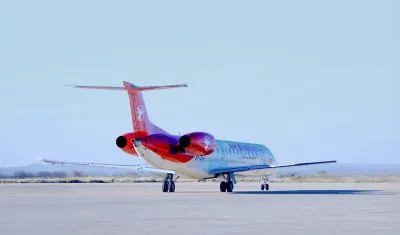Sometimes it is difficult to believe how far Mozambique has come. Infrastructure of all kinds needs rehabilitation but Maputo has made giant steps in the right direction since the end of the civil war in 1992. With a sound economic base, huge gas and coal discoveries have been made that should guarantee sustained progress for at least another generation. Neil Ford provides an overview of the country’s economic structure.
The economy is expected to grow by 7.5% this year, slightly down from 8.1% last year but in line with GDP growth over the past decade. Inflation remains a problem but is lower than in the past. The IMF Mozambique representative, Victor Lledó, commented: “The strengthening of the metical and the prudent policies adopted by the government fostered the fall in inflation compared to last year, however, core inflation remains high and needs to be reduced.”
Research by Ernst & Young concluded that Mozambique would attract an average of $1.4bn in foreign direct investment (FDI) over the next few years. The biggest existing foreign investors in Mozambique by country are South Africa, Portugal, the UK, India and Brazil, in descending order. However, the research found that FDI would create an average of just 8,000 jobs a year, making little contribution to national employment. Much of that investment will be made in high value, low employment sectors, such as the mining and oil and gas industries.
The Mozambican Centre for Investment Promotion (CPI) has set itself a much more ambitious target of attracting $5.67bn FDI a year over the next three years. The assistant director of the CPI, Godinho Alves, says that a more diverse investor base will benefit the country. He said: “We have had traditional investors like Portugal and South Africa that have always been in the top 10. Now we have China and other emerging economies that are looking to diversify their markets and seek resources.”
However, it must be noted that different organisations use different criteria for defining FDI and so the gap between the CPI goal and the Ernst & Young forecast may not be as great as it seems at first sight.
Power to the people
Although fewer than 10% of Mozambicans have access to electricity at home, the national power sector should change out of all recognition over the next decade.
The 2,075MW Cahora Bassa scheme currently forms the centrepiece of generating capacity and the dispute over ownership between the governments of Portugal and Mozambique has finally been settled in favour of Maputo. The government and national power company Electricidade de Moçambique (EDM) are therefore free to conclude new power export deals with South Africa and other neighbouring states, unencumbered by any threat of legal challenges.
In May, the government of Malawi announced that it would begin to import electricity from Cahora Bassa following the conclusion of a memorandum of understanding with Maputo. South African power utility Eskom is struggling to sustain adequate electricity supplies within its domestic market and can therefore no longer be relied upon to support the other member states of the Southern African Power Pool (SAPP). The Malawian Minister of Foreign Affairs, Ephraim Chiuma, said: “We have an energy deficit, which has had a negative impact on the country’s economy, and thus Mozambique’s energy potential can help us solve that situation.”
The government hopes to increase national generating capacity from 2.4GW at present to 8.4GW by 2016 but this target deal has already slipped several times. Most of this should be achieved through the exploitation of part of the country’s 14GW of untapped hydro potential mainly in Tete and the provinces of Manica and Niassa in central and northern Mozambique.
Transport integration
While the Mozambican economy has grown at an impressive rate over the past 20 years of peace, investment remains concentrated in the far south and far northwest. Development in much of the rest of the country has been limited by the lack of transport infrastructure.
As in most parts of Africa, colonial era roads and railways were designed to transport goods from inland areas to the coast, rather than between provinces or even neighbouring colonial territories. Even much of the infrastructure that did exist was left to decay or was attacked by rebel forces in the 1970s and 1980s. As a result, huge swathes of the country have been cut off from the economic mainstream.
Over the past decade, the government, foreign investors and the donor community have put a great deal of effort into redeveloping Mozambique’s west to east railways. As discussed in the section below, new investment from the coal industry should ensure that these transport arteries and ports are further improved. Now, however, the government has announced plans for a north-south railway that would act as a spine connecting all existing lines in the country.
This would enable coal from Tete Province to be exported via a range of different ports but would also encourage trade within the country and the development of rich agricultural land with export markets in mind.
Although some previous transport projects have been brought back under state control following problems with private sector operation, some form of public-private partnership including state-owned Portos e Caminhos de Ferro de Moçambique (CFM) is likely to develop the project.
The tourist dollar
One industry that could generate more employment in the long term is tourism. Mozambique’s beaches were famed for their beauty during the colonial period but were largely abandoned by foreign visitors during Mozambique’s long civil war. Now, however, South Africans and other tourists are returning to the country. Apart from its natural beauty, the country benefits from warm weather and warm seas at times when South African coastal resorts are not as clement.
Low-cost airlines now operate services between Johannesburg and Maputo, bringing Mozambique within reach for a weekend trip, while improved road and rail links with South Africa also provide means of transport into Mozambique.
Mozambique’s National Tourism Institute recently launched a tender for the contract to develop a new tourist resort in the Inhassoro area of Inhambane Province, close to Bazaruto Archipelago National Park and with 5km of dedicated beach front. The entire venture, including golf courses and a casino, is expected to cost $800m to develop. However, much smaller, more local projects, such as guest houses and restaurants, are likely to have a greater impact in terms of job creation.
Want to continue reading? Subscribe today.
You've read all your free articles for this month! Subscribe now to enjoy full access to our content.
Digital Monthly
£8.00 / month
Receive full unlimited access to our articles, opinions, podcasts and more.
Digital Yearly
£70.00 / year
Our best value offer - save £26 and gain access to all of our digital content for an entire year!

 Sign in with Google
Sign in with Google 





